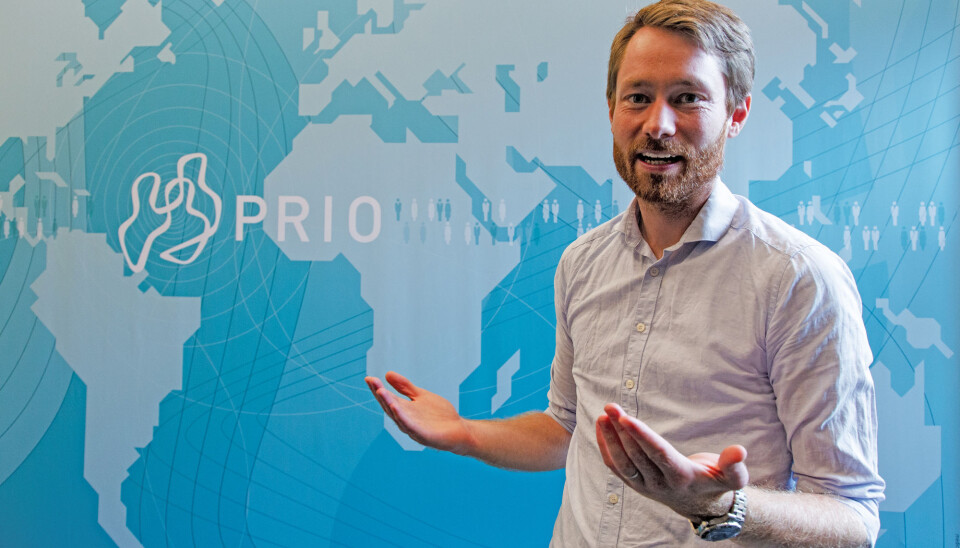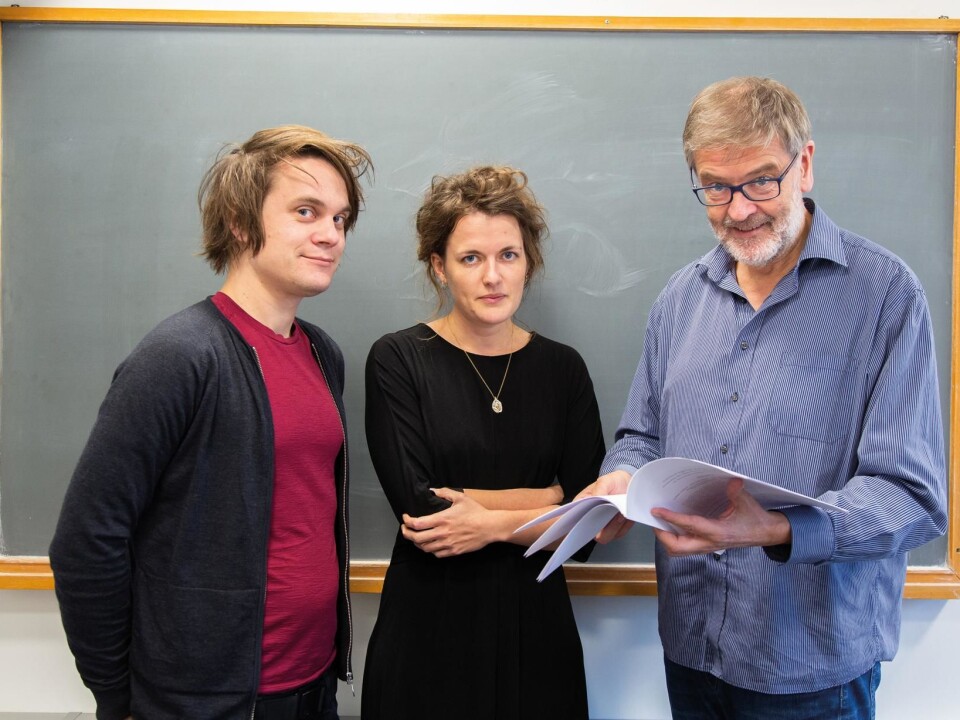
The world has become more peaceful
Although the war in Syria is in its eighth year, statisticians have established that the world is becoming increasingly peaceful.
This article was originally published on Apollon - Research magazine from The University of Oslo. Read the original article.
For a number of years, the Peace Research Institute Oslo (PRIO) has used statistics to conduct research about armed conflicts. They work closely with some of the country’s foremost statisticians at the University of Oslo.
“We could not have conducted our research without extensive use of statistics," says Håvard Mokleiv Nygård, research director at PRIO.
Ever since its founding in 1959, the Institute has researched why war happens, how war develops and what steps can be taken to halt conflicts.

To do this, PRIO has systematically collected data from all possible conflicts, the countries that are at war, and how many are killed. The statistics show that fewer people than previously die in war.
“The wars after the Korean War (1950–1953) have killed a quarter as many people as the wars before the Korean War,” says Nygård.
He calls such a change, here regarding the number of people killed in battle, viewed over time, a breaking point.
“The change after this breaking point is an indication that the world has become a more peaceful place.”

Statisticians who work with Håvard Mokleiv Nygård say it is nevertheless statistically uncertain when the breaking point occurred.
“Although the Korean War is the best guess, the breaking point could also have been in 1945 or at the end of the Vietnam War. However, although the exact time is uncertain, we still see a clear difference between the number of killed before and after the breaking point,” says Nils Lid Hjort, professor of statistics at the Department of Mathematics at the University of Oslo.
International disagreement
The postulate that the world has become more peaceful was put on the international agenda in 2011 by Harvard professor Steven Pinker in his book about the history of violence, “The Better Angels of Our Nature”. He built a lot of his research on datasets from PRIO.
Not everyone agreed with his conclusion. One of them is Professor Aaron Clauset from the University of Colorado in Boulder. He believes that the data base is not good enough for drawing such a conclusion.
The discussion also revolves around the the statistical methods being used.
“The distribution of the number of people dying in war does not follow any normally distributed curve. There are many wars in the middle of the curve with a certain number of killed and few wars on the curve’s extremes, with few or many killed. Wars can erupt that kill a great many people. An example is the Second World War. A Third World War can also occur, in principle, with 150 million killed,” says Håvard Mokleiv Nygård.
Many of the statistical tools used in social science research work well, provided the statistical distributions involved are like the classical normal or Gaussian, or from a range of not-so-extreme models. The number of persons killed in wars, however, follows more complicated patterns, often of the so-called power-law type. These have long tails, with high enough probabilities for even very large outcomes.
This is why the mathematicians from Blindern got involved. They have launched new methods for finding change points in time series where the data follow such power-law distributions.
“The statistical power-law distributions are challenging, regarding probability theory and statistical inference. Although some phenomena are very rare, such as very high death figures, we have taken this into account in our analyses,” says Nils Lid Hjort.
Aaron Clauset also worked with such power-law distributions, but the mathematicians at UiO have developed the mathematics a notch further and have come to a different conclusion.
Their disagreement is not about where the breaking point is, but whether it is possible to say that the world has become more peaceful.
Clauset believes that the trend after the Korean War must continue for another 150 years before he is comfortable, purely statistically speaking, saying that the world has become more peaceful.
The mathematicians at UiO disagree with him.
“We can already now say that the world has become a more peaceful place,” says Céline Cunen, postdoctoral fellow at the Department of Mathematics at UiO. The mathematical methods were part of her thesis for which she recently earned her PhD.
Impact on war
The mathematicians have also looked at the circumstances that affect the number of deaths in a war. Examples include the level of democracy and scope of trading measured a year before
the war erupted.
“Our idea is: The more trade a country has with other countries, the less risk of war,” says Céline Cunen.
Their data are derived from a war database that contains information about all wars dating back to 1800. It shows which countries have been at war with each other and how many were killed. The last recorded war in the database is from 2003. That was when the United States invaded Iraq. In order for a war to be recorded in this particular database, at least two countries must be at war, with at least a thousand killed in one of the countries.
Their analysis does not take civil wars into account, such as the soon eight-year-long civil war in Syria.
There have been fewer and fewer interstate conflicts. There was a gradual increase in civil wars leading up to 1992. The trend turned in 2011 with the Arab Spring. Since then, the number of civil wars has flared up again.
The mathematicians now want to test their new method using data from both interstate and civil wars.
All conflicts
A natural question is whether it would have been possible to predict a big war such as the Second World War.
“The models can also be used to say whether the First or Second World War could have been foreseen, based on the conflict data we had before the wars started. It’s very rare for a conflict to start overnight. There are often escalations from something very small, to something very big,” says Håvard Mokleiv Nygård.
A more recent example is the Falklands War in 1982, which started with sanctions and bickering and ended in full-out war.
In order to investigate how a conflict can develop into war, PRIO also uses another conflict database. This database contains information about all conflicts since 1946 where more than 25 have been killed over the course of one year.
The researchers are now developing statistical tools that can determine when crises and disputes between countries escalate into wars. In other words, they model the escalation.
“In order to handle conflicts while they are still small, we need to understand how conflicts develop. Once we understand this, we hope that it will become possible to deal with conflicts and stop them in time. Without statistical analysis, it is impossible to do so,” Nygård points out.
“The world spends far too few resources today on prevention. Steps are not taken until after the fact. We still know too little about how to prevent conflicts. It is then important to understand the breaking points in order to prevent conflicts in a systematic and manageable manner,” he says.
The research project can theoretically be used to study what could have been done to prevent past conflicts.
“We have already been able to determine that a number of conflicts could have been considerably smaller if peacekeeping forces had been deployed. It is not ethically defensible to initiate an experiment where some countries receive peacekeeping forces and others do not. We must therefore use statistical tools that can simulate the experiment,” explains Håvard Mokleiv Nygård.
Over the next three years, Gudmund Horn Hermansen, associate professor at the Department of Mathematics, intends to find the reasons why conflicts escalate.
He will look at the interaction between non-violent and violent protests and what it means for a conflict to escalate and why some conflicts stop.
“Our ambition is to be able to say what it takes to escalate a conflict and how it is possible to prevent this from happening,” says Gudmund Horn Hermansen.






























